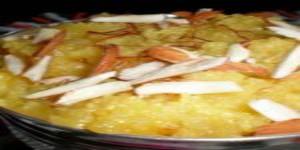
Scope
The Hindu Compliance System gives direction on cooking science which is compiled from Bhaga Shastra. Bhaga Shastra classifies foods into rajasik, tamasik and satvik types. Rajasik food makes one feel agitated, aggressive, lustful and egoistic. Tamasik food makes a person lazy, sleepy and depressed. Satvik food gives clarity to the person and brings him peace of mind leading to bhakti (devotion), tripti (fulfilment) and ananda (bliss).
Six types of tastes are described in the Bhaga Shastra – salt, sweet, sour, hot, bitter and pungent. It states that every meal should include all these tastes so that the appetite is satisfied and the tongue is neutralized by all the tastes being together. As per the instructions in Bhaga Shastra, in order for all parts of the body, mind and brain to function properly, a balanced diet of all these tastes is a must.
Further, the purpose of having all six tastes is to balance the tridoshas in the body, namely vaata (acidic), pitta (alkaline) and Kapha (phlegm). Every ingredient used in Hindu cooking is classified as per its dosha properties.
For thousands of years, Hindus have been cooking food that is organic, nature friendly and with numerous benefits. This standard will help organizations, businesses like hotels, restaurants etc. to cook the food as mentioned in Hindu Scriptures.
Ingredient and Process of Cooking
Most types of Halwa are relatively dense confections sweetened with sugar or jaggery and use large quantities of ghee in their making. The texture may vary, but semolina based Halwa, which are the most popular, are gelatinous and translucent. In North India, kada prasad offered in the gurdwara of Sikh temples is a wheat based, ghee and sugar laden halwa.
India has many types of halwa sweet confectionery, region wise categorized. They include the widely popular suji (semolina) halwa. Other region specific halwa include wheat halwa, moong dal ka halwa, gajar (carrot) ka halwa, Dudhi (bottle gourd) Halwa, Kesari Bath (saffron colored semolina), etc.
Barfi, burfi 40 On the other hand, it is a dense milk-based sweet. A few of the famous varieties of barfi include besan barfi (made with gram flour), kaju barfi (made with cashews), pista barfi (made with ground pistachios), and sing barfi (made with peanuts). The main ingredients of plain barfis include condensed/thickened milk and sugar. The ingredients are cooked in a vessel until the mixture solidifies.
The flavour of a barfi is often enhanced with fruits (such as mango or coconut) or nuts (such as cashew, pistachio, or peanut) and spices (such as cardamom). Burfis are typically cut into square, diamond, or round shapes. The sweet is easily adapted for casual occasions to the most formal event. Different types of barfi vary in their colour and texture.
The confection is served all year round, but especially consumed during the holiday seasons, wedding ceremonies, and religious festivals. Barfi is often served during Eid and also Diwali.
Following ingredients are required for making Wheat Halwa With Almonds :
- Wheat – ½ padi
- Ghee – 1 palam
- Almonds – 5 palam
- Rock sugar – 5 palam
- Brown sugar – 20 palam
- Cardamom powder – ¼ palam
- Nutmeg powder – 1/8 palam
- Fry wheat half padi and soak it in water for 2 days. Then grind it smoothly. Mix it in 2 or 3 padi water. Close the mouth of another vessel with a cloth and pour the wheat mixture in it. Sieve this and keep it aside for 2 hours. Remove the water from the top without mixing it.
- Boil together pure water 3/8 padi and ghee 1 palam. Add almonds, rock sugar, brown sugar, cardamom powder, nutmeg powder. But de-skin the almonds and powder the granulated sugar. Add the rest of the ingredients after 5 minutes of adding the almonds. After it boils, add the separated syrup from the wheat and keep stirring it repeatedly. Then smear a tray with ghee and pour the halwa. Let this be 3 inches thick. After it cools down and thickens, make squares with a knife.
- Dissolve a pinch of saffron in milk and add this to the boiling water along with the almonds and sugar. Saffron is good for your health and it controls hunger. It cures a lot of diseases. Instead of wheat, almonds can also be used. Then it is called Almond Halwa.
References
Hindu Bhaga Sasthiram: Click Here
Hindu Compliance Body
The Hindu compliance body was established under the executive order of The Supreme Pontiff of Hinduism, dated August 14, 2020, order number 10010, under the title Reviving the Hindu Compliance System and Body
to create, promote, spread and teach the standard procedures for all products and services that are in compliance Hindu Shastras.
Copyright
HCS has the copyright of all its publications. No part of these publications may be reproduced in any form without the prior permission in writing to HCS. This does not preclude the free use, in the course of implementing standard, of necessary details mentioned above. Enquiries related to copyrights to be addressed to KAILASA.
